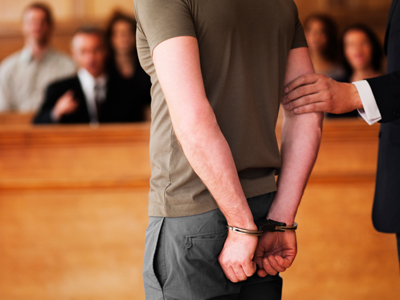
Ask the AI Tutor
Need help with Crime And Punishment: The 20th Century? Ask our AI Tutor!
AI Tutor - Lucy
Connecting with Tutor...
Please wait while we establish connection

There are four categories of prison in the UK - A, B, C, and D.
Crime And Punishment: The 20th Century
How did crime and punishment change in 20th century Britain? Explore key reforms, new types of crime, and debates about policing and prisons in this GCSE History quiz.
1 .
In 1902 special institutions were set up to deal with young offenders. What were they called?
Approved schools
Borstals
Young Offenders Institutions
Junior Jails
The first one was established in Kent
2 .
In 1948 flogging was abolished as a punishment in prisons. What instrument was used?
The whip
The birch
The cat of nine tails
A bamboo cane
Many people found this punishment obscene and cruel
3 .
What form of capital punishment was suspended, and then abolished, from 1965?
Hanging
Shooting
Lethal Injection
The Electric Chair
Many people regarded capital punishment in any shape or form as unacceptable. In particular it was not clear that it served as a deterrent
4 .
In 1967 sexual relations between consenting males over 21 were made legal. What further condition was added?
These activities must take place indoors
These activities must take place in private
No special instruments or clothing must be used
No more than 3 people must be involved
Sexual acts between women had long been legal, and now homosexual law reform had real public support
5 .
Also from 1967, tests could be administered at the roadside by the police to determine how much alcohol a driver had drunk. What form did these tests take?
Blood test
Urine test
Breath test
Faeces test
Now it became unfashionable to drink and drive. Drink drivers risked losing their licences
6 .
From 1972 CSOs could be imposed on convicted defendants instead of prison, probation or fines. What does CSO stand for?
Compulsory Service Order
Community Service Order
Community Service Obligation
Consensual Service Order
These had of course to be supervised, but they did keep many people out of overcrowded jails
7 .
In 1987 corporal punishment was abolished in state schools, and in 1999 this ban was extended to independent schools. What instrument of punishment had been used on pupils' hands hitherto in Scottish state schools?
The tawse/strap
The whip
The birch
The paddle
The use of physical punishment was declining in most schools before the legislation
8 .
In the 1990s a new way of keeping a check on released prisoners was introduced. What was the method called?
Tagging
Banding
Marking
Monitoring
This was another cheap way of tracking people. If they abused this system, they could be sent back to jail
9 .
There are now four categories of prison (and therefore four categories of prisoner too). Which category is graded as "not maximum security, but escape needs to be made very difficult"?
A
D
C
B
Prison escapes are to be avoided at all cost. Finding escapees is a time-consuming and expensive task
10 .
Under the Misuse of Drugs Act, 1971 drugs are assigned to a number of categories. In which category would one find heroin, cocaine and LSD?
A
D
C
B
Drugs are regularly re-assigned to a different category, and occasionally removed from classification altogether
You can find more about this topic by visiting BBC Bitesize - Changes in crime and punishment, c.1500 to the present day
**Unlimited Quizzes Await You! 🚀**
Hey there, quiz champ! 🌟 You've already tackled today's free questions.
Ready for more?
Ready for more?
🔓 Unlock UNLIMITED Quizzes and challenge yourself every day. But that's
not all...
not all...
🔥 As a Subscriber you can join our thrilling "Daily Streak" against other
quizzers. Try to win a coveted spot on our Hall of Fame Page.
quizzers. Try to win a coveted spot on our Hall of Fame Page.
Don't miss out! Join us now and keep the fun rolling. 🎉
**Unlimited Quizzes Await You! 🚀**
Hey there, quiz champ! 🌟 You've already tackled today's free questions. Ready for more?
🔓 Unlock UNLIMITED Quizzes and challenge yourself every day. But that's not all...
🔥 As a Subscriber you can join our thrilling "Daily Streak" against other quizzers. Try to win a coveted spot on our Hall of Fame Page.
Don't miss out! Join us now and keep the fun rolling. 🎉






